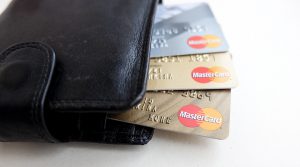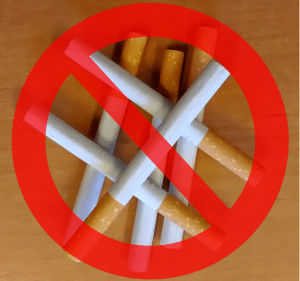Tradition tells us that spring is the time for love, right? All those warm breezes and flowers bursting to life – it’s enough to get anyone in the mood. But what about winter, with its long, cold, dark nights? Surely that’s when you need comfort (and somebody warm beside you) the most! That’s why there are lots of people out there looking to turn a hook-up into someone they can “cuff” for the hibernating season. But if you’re getting involved in cuffing up this winter, what might you be waking up to when the spring thaw comes?
What Is Cuffing?
One-night stands, long-term relationships, friends with benefits – it’s pretty clear what these set-ups are, even if the emotions involved in them sometimes aren’t! But what does it mean if you’re looking to cuff someone, or if you find yourself all cuffed up? Well, the term itself comes from handcuffing someone or tying yourself down to that one person as a way to keep the cold and loneliness of winter at bay, even if you wouldn’t ordinarily be interested in a long-term commitment, either with that person or in general.

That means the cuffing zone seems to occupy a space somewhere between an actual long-term relationship and a friends with benefits situation. You might not be seeing anyone else, but there are certain expectations that might be missing from your arrangement, and the person you’re cuffed to might not even be someone you’d normally think of settling down with.
These relationships are usually pretty short-term, as well; most people acknowledge that the “cuffing season” starts in October or November, with most couples starting to snap out of it by the time the more mushy romantic stuff surrounding Valentine’s Day has them rethinking things. That’s not to say that a cuff will never turn into a more serious relationship, but most don’t look like your typical long-term partnering, so you’ve got to go into it with your eyes open.
Why Get All Cuffed Up?
Well, why get into any relationship at all, right? Ok, maybe that’s a little unhelpful, so let’s look at why you might want to be tied to someone temporarily when you don’t really have a strong desire to be committed to them (or even to anyone). The answer really does seem to lie in the seasonal nature of it: we’re just naturally looking for comfort and connection, both physical and emotional, at this time of year. And, to be honest, jumping right into the cozy part of a relationship can seem pretty appealing as the potential for outdoor fun disappears!
According to certified sex therapist Holly Richmond, Ph.D., LMFT, CST, “The emotional side is we’ve got the holidays […] where people go home to their families, and some single people feel lonely or different or sad about not being coupled up. The physical side, I think, is more of an evolutionary biology piece. We’re pack animals, and in the winter months, we had to spend time together literally for warmth.”
Are They (or You!) A Cuff?
Now that we’re fully into cuffing season, you might just be falling prey to your natural instincts and biological urges (not to say that can’t be fun…) to keep warm and stave off seasonal depression – remember, seasonal affective disorder is a thing, after all. That means it’s time to take a good look at your winter crush or fling and figure out what’s really going on, so you know what you’re getting into, and so you can both get on the same page. You’re probably cuffed up (or your potential winter mate is probably looking to cuff) if:
- You or they are not concerned about long-term compatibility. If you’ve got mismatched goals for the future, but it’s no big deal, you’re probably not going to be their plus one at any summer weddings.
- You spend time together, but you and/or they are not interested in defining the relationship. Like we said, a cuffing situation can feel like a weird limbo between a casual and serious relationship, so you’re probably not meeting each other’s family, but you might be the only one for each other – for now.
- You’re probably not heading out on a lot of dates. If you’re dating life mostly consists of Netflix and takeout, you’re probably just getting into hibernation mode with each other.
- They might do a lot of hinting that they are looking to cuff, even saying things like they hate being alone on New Years or that they’re relieved they have a date for their holiday parties.
- Some things about the relationship are just not quite “right.” For example, there might be some on-and-off ghosting, the connection might feel purely physical, the sex might only feel “good enough” for now, or you or your partner might be acting in emotionally unavailable ways.
Some or all of the above starting to sound very familiar? Well, you might have been cuffed, or you might be on the hunt to do some cuffing, which is totally fine if that’s what you’re into! But you might want to keep a few things in mind this season.
Keeping Your Head During Cuffing Season
Again, we want to make it perfectly clear that there is absolutely nothing wrong with cuffing – hey, whatever gets you through the winter! You could end up spending a lovely season with someone and looking back on those long months with fondness as you move on, or you could even end up with someone you want to spend time with even when the snow melts – who knows? But what is clear is that you need to make sure you’re making healthy choices for yourself, so keep these things in mind if you find yourself on the hunt or being hunted this cuffing season:
- Know what you want – Before you decide whether cuffing season is worth your time, and you start swiping up a storm on those dating apps, be honest with yourself about what you want and whether a temporary relationship will fulfill your needs.
- Communication is key – Anytime you add two human beings into a situation, there’s the potential for hurt feelings, so make sure you both know what page you’re on. You also need to know how to set boundaries (even if it’s something as simple as knowing whether giving gifts to each other is cool or not), and be open about how open you actually want to be. Tell them what you’re looking for, and if the other person says they’re not looking for anything serious, listen to them and take what they say at face value!
- Keep your standards – You might be feeling that winter itch, but don’t rush into anything, and don’t feel pressured by anyone else to have dates for holiday events – don’t end up acting out a relationship you’re not actually in! Dating out of loneliness or boredom could end up leading to unhealthy relationships, so you might be better off spending time with friends or family instead of hastily picking the wrong person to give your time to. And remember, always, always be safe when it comes to sex!
- Be in the moment! – Don’t worry what the calendar says, and don’t worry what anyone else says about your relationship – if it’s right for you at that time, enjoy it for what it is. If you do find yourself catching feelings, and that’s not what you want, or you feel like your cuffing partner won’t be down to take things further, that’s when it’s time to reassess.
The bottom line is that cuffing can be just the thing to get you through these long winter nights, as they stretch into long winter months. As with anything in life, though, go into it with open eyes, be present, know what you want – and then be safe, and honest with yourself and the person who’s warming you up on the couch. And if you find yourself dreaming together and getting eager to introduce each other to mom, well, you might be more than just cuffed, so watch out!


















